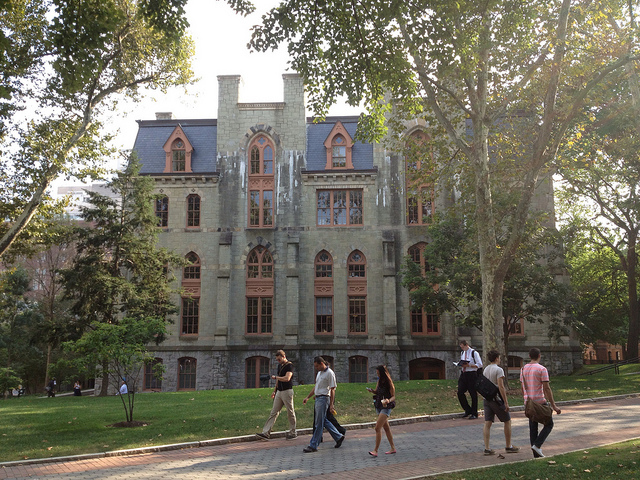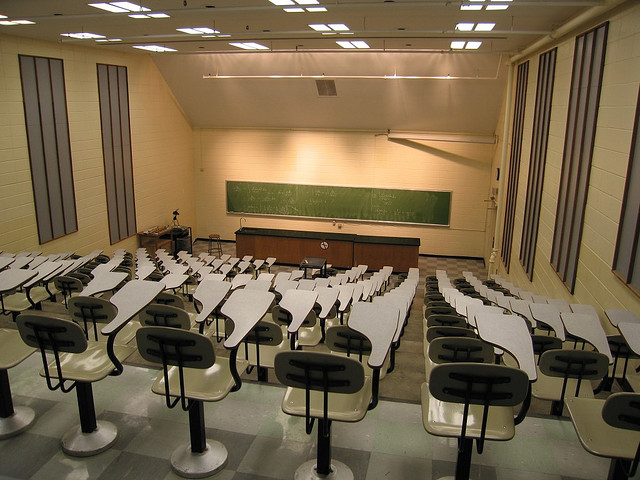As the calendar turns over, it is time to make plans and New Year resolutions. One of my favorite things about resolutions is coming up with new books to read. If you’re looking for higher ed books to read this year, I would recommend these to you. I’ve included a mix of some older and newer titles. I’d love to hear your recommendations as I plan my own list.

Photo credit: Michael D Beckwith
Higher Ed Professor’s 2016 Book Recommendations
1. Life on the Tenure Track: Lessons from the First Year by James Lang
I often use this book when teaching faculty and academic governance. I’ve found no better book at pulling the curtain back on the life of a faculty member. An engaging and quick read, Lang’s book narrates his first year on the tenure track and shows the highs and lows of faculty life.
2. The New Science of Learning: How to Learn in Harmony with your Brain by Terry Doyle and Todd Zakrajsek
In an accessible way, this book addresses the growing body of research on how people learn. Both students and faculty will find useful and concrete suggestions for how to improve teaching and learning.
3. Big-Time Sports in American Universities by Charles T. Clotfelter
Big-time sports are a significant yet often problematic aspect of higher education. Clotfelter’s book on the subject is among the most well-researched and definitive treatments of intercollegiate athletics.
4. Degrees of Inequality: How the Politics of Higher Education Sabotaged the American Dream by Suzanne Mettler
Unlike most books that call for higher education reform, Mettler rightly argues to return to the days where higher education was supported and successful. Her books explains what went wrong and calls for using higher education to reduce socioeconomic inequality.
5. Deep Work: Rules for Focused Success in a Distracted World by Cal Newport
I am increasingly convinced that the difference in productivity is focusing on deep work, the ability to focus without distraction on a cognitively demanding task. In this book, Newport argues for focusing on deep work and eschewing shallow work (what we tend to focus on with email and other less significant activities).
6. The Coming Jobs War by Jim Clifton
Clifton, chairman of Gallup Polling, argues that job creation and entrepreneurship are the world’s most pressing challenge. He suggests that big cities, great universities, and powerful local leaders will create the next big breakthrough. I find his argument quite compelling and it is driving some of my own research on cities and higher education this year.
7. College (Un)Bound: The Future of Higher Education and What It Means for Students by Jeffrey Selingo
Different than many books in the reform genre, Selingo takes a critical stance on higher education, but backs up his argument well. He argues that MOOCs, hybrid classes, and unbundling of higher education will increase access to higher education. While I disagreed significantly with much of his argument, I appreciated the care and thought behind the work.
8. Academic Leadership and Governance of Higher Education: A Guide for Trustees, Leaders, and Aspiring Leaders of Two- and Four-Year Institutions by Robert Hendrickson, Jason Lane, James Harris, Richard Dorman, and Stan Ikenberry
This is another book I use often when teaching higher education governance. As the title suggests, this book is a useful guide for understanding how higher education works for everyone from new department chairs to trustees.
9. How to Write A Lot by Paul Silvia
As longtime readers know, I spend a great deal of time thinking about how to improve writing and writing skills. Silvia’s book is a great accessible read that emphasizes specific steps to improve one’s writing.
10. Teaching for Learning: 101 Intentionally Designed Educational Activities to Put Students on the Path to Success by Claire Major, Michael Harris, and Todd Zakrajsek
Self-promotion alert… if you haven’t read Teaching for Learning yet and you teach college students, I recommend you get a copy. It is an easy to use guide with specific activities that you can immediately use in your classroom.





